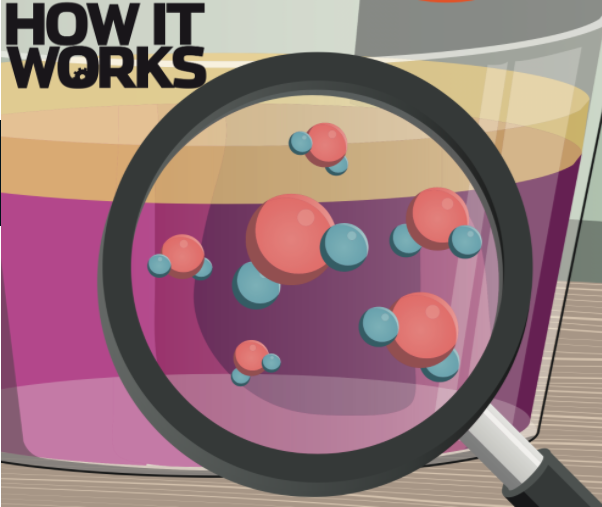How to make lava in a glass
by Ailsa Harvey · 21/04/2021
Create a gloopy, lava-like substance from items you have at home

1. Fill your glass
Firstly, find a small glass or a deep glass bowl. Fill it around three-quarters full with water, then add a few drops of food colouring. You can use any colour you want, but red will give it an authentic lava look!

2. Add the oil
Now pour one-quarter of a glass of cooking oil into the water. You’ll see that the oil rises to the top of the water, with a clear separation between the two liquids. This is because oil is less dense than water.

3. Try to mix
See if you can get the two liquids to mix by stirring the mixture. You won’t have much luck! This is because water molecules are polar – a little like a magnet, they have charges at each end that attract them to each other.

4. Hydrophobic oil
The oil molecules are hydrophobic (‘water- fearing’) and non-polar. Because their charge is spread evenly they aren’t attracted to the water molecules at all. Combined with its lower density, this makes the oil rise to the top.

5. Add some salt
But not for long! Sprinkle a teaspoon of salt into the glass. You should notice some blobs of coloured oil sinking down into the glass then rising up again. The effect is a little like that of a lava lamp.

6. Try more options
Try adding more salt to the glass. Is there a point at which the experiment stops working? You can also try using a differently shaped glass, a different type of oil or different food colouring
– how does this affect your results?
Summary
When you pour in the salt, each granule sinks through the oil and into the bottom of the water, taking a blob of oil with it. The salt then dissolves in the water and the oil can rise back to the top. Would you get the same affect with sugar?
For more science and technology articles, pick up the latest copy of How It Works from all good retailers or from our website now. If you have a tablet or smartphone, you can also download the digital version onto your iOS or Android device. To make sure you never miss an issue of How It Works magazine, subscribe today!




